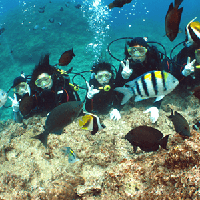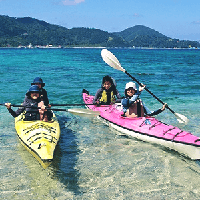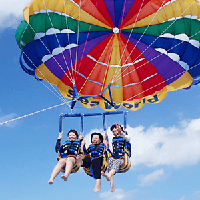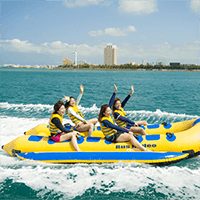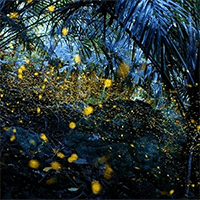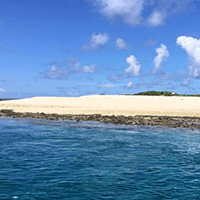Kansai in Visit temples & shrines
- Age 1~Age 70
- Over 6 hours on the day
- 07:20
Schedule for the day: [07:20] Meet at Nihonbashi Exit 2 [09:50] ▼Ine Funaya ~ "The Venice of Japan" "The most beautiful village by the sea" ~ |Ine Town |Funaya Hiyori | INE COFFEE (approx. 40 minutes, walk or ride, ride fare at own expense) [11:10] ▼One of Japan's Three Most Scenic Views, "Amanohashidate Observatory" |Chion-ji Temple / Monjudo Hall (a temple for praying for academic success) |Walking and playing in the sea (approx. 2 hours including lunch, expenses at own expense) [14:40] ▼Kyoto Gassho Village ~ Miyama Kayabuki-no-Sato (approx. 40 minutes, free time) |Let's go to the most beautiful photo spot - the little red post box |Miyama Milk and Miyama Ice Cream are must-try in Miyama [15:20] After a fun day's tour, we headed home. [17:20] Shinsaibashi/Dotonbori Area (about 1 hour, free time) ▼ Funaya Days: Funaya Days is a niche tourist spot in Ine that has been featured in lifestyle magazines recently. Locals with high ideals have been working hard to create a tourist exchange facility where anyone can stop by and enjoy the beautiful scenery of Ine. There are facilities such as an information center, restaurant, and cafe. "Hiyori" means sunny and good weather in Japanese. The sight of the seawater sparkling in the sunlight is the most ideal expression of "Funaya Weather". There is also a boathouse that you can visit. ▼ INE COFFEE: is a Japanese modern design with a focus on simple and clean style. The seaside coffee shop is very attractive, with colorful pillows, and sitting here and looking at the sea is a completely relaxing and healing atmosphere. However, the best view here is from the corner on the first floor. The floor-to-ceiling windows overlook Ine Bay. It's a wonderful view. The "INE CAFE" logo is placed on the table, and two heart-shaped sunglasses are placed on the chair. The cafe basically provides a special area for taking photos and checking in, which is amazing. The beautiful view from the floor-to-ceiling windows is like a postcard, and it makes you feel like time has stopped. You should also visit the unique boathouse - the first floor is a cabin, and the second floor is a private home. This unique structure is a "funaya", a feature unique to Ine Town. This tour is a mixed tour, and participants come from all over the world.
- Age 14~Age 99
- 5~6 hours
- 10:00 / 10:30 / 11:00 / 11:30 / 12:00 / 12:30 / 13:00 / 13:30 / 14:00 / 14:30
Walk around Uji, the ancient capital of Kyoto, in a kimono. Feel free to wear a kimono and go out to tourist spots such as long-established tea shops, the Phoenix Hall of Byodo-in Temple, a World Heritage Site (World Cultural Heritage Site), and Ujikami Shrine. You are sure to find a kimono design that suits your taste. You can choose from a wide variety of new and beautiful kimonos and cute yukatas, all available for rental at a low price starting from 3,990 yen (tax included). For a limited time, we also offer a student discount plan. Our experienced dressing staff will consult with you on casual kimonos, yukatas, and popular antique kimonos. Find a kimono that suits you and enjoy a stroll around Uji with friends, parents and children, or as a couple.
- Age 1~Age 70
- Over 6 hours on the day
- 08:40 / 09:50
[08:40] Exit 2 of Nihonbashi (Namba/Shinsaibashi area) [09:50] Kyoto Station Hachijo Exit, sightseeing bus parking lot [11:20] ▼ One of the Three Scenic Views of Japan, "Amanohashidate Observatory" (about 2.5 hours including lunch, own expense) [14:30] ▼ Ine no Funaya ~ "Venice of Japan" "Kyoto's last hidden place" ~ (about 1 hour, walk or bike, seagull feeding boat, etc., please pay the boarding fee yourself) [15:30] End of the day's tour and head back. [19:00] Shinsaibashi/Dotonbori area (about 1 hour, free time) Amanohashidate is one of the Three Scenic Views of Japan, along with Matsushima in Mutsu and Miyajima in Aki. It is a sandbar about 3.6 kilometers long, formed by the deposition of the coast. About 8,000 pine trees of various sizes are planted, and white sand beaches stretch on both the east and west sides. It is a special natural landscape. It is called "Amanohashidate" because it looks like a bridge stretching diagonally towards the sky. On Mount Monju, there is an observation deck from which you can see Amanohashidate. The mountain has a Ferris wheel and recreational facilities suitable for all ages. From here, Amanohashidate looks like a dragon flying in the sky, so it is called "Flying Dragon View". From here, you can see the vivid scenery of Amanohashidate. (Cable car ticket is at your own expense: Amanohashidate Observation Deck Cable Car/Monorail Combined Ticket 850 yen) [Ine Village] was selected by the Japanese as one of the "18 Most Beautiful Villages in Japan". With its unique Japanese floating boathouse architecture, you can experience the original ecological landscape that you cannot experience in tourist spots. Even today, people coexist with the sea in front of them. The clear and beautiful sea, the deep green mountains, the rapidly changing colors of the sky, and the colors of the boathouses that represent Japan. These are the pure colors of nature that can only be experienced in Ine Town. The fishing village along the coast is away from the hustle and bustle and is full of simple innocence. You can experience a 25-minute cruise around Ine Bay at your own expense, and you can also feed the seagulls. (Boats depart every hour and 30 minutes. The boarding fee is 1,200 yen for adults and 600 yen for children, at your own expense. A bag of food for the seagulls costs 100 yen. If the tour is cancelled due to wind or waves, you can wander around freely.) Note: There are many eagles living around the Ine Funaya Ya, so please be careful when taking the sightseeing boat. If you see an eagle, stop feeding the seagulls immediately and put away any food you are holding to avoid being pecked by the eagle.
- Age 1~Age 70
- Over 6 hours on the day
- 08:40 / 09:50
[08:40] ▼Nihonbashi Station Exit 2 (Namba-Shinsaibashi area) [09:50] ▼Kyoto Station Hachijo Exit (in front of 7-Eleven) [10:30] ▼Kinkaku-ji Temple (about 40 minutes) Visiting fees are at the customer's expense. [12:00] ▼Kiyomizu-dera area (individuals visit, stroll freely, lunch on their own / about 3.5 hours) [15:20] ▼Fushimi Inari Taisha Shrine (about 70 minutes) [16:50] ▼After enjoying the day's itinerary, we start to return. [18:10] ▼Shinsaibashi, Dotonbori area (free stroll / about 1 hour) ▼The original name of Kinkaku-ji Temple is Rokuon-ji Temple. It is also called "Kinkaku-ji Temple" because the exterior walls of the Shariden Hall, the central building of the temple, are all decorated with gold leaf. The temple was built in 1397. Originally a villa for Shogun Ashikaga Yoshimitsu (the prototype of Shogun Yoshimitsu in the anime "Kei Ikkyu-san"), it was later converted into the Zen temple "Bosatsurei". If you visit Kinkaku-ji Temple during the autumn foliage season, the golden tower and the red autumn leaves covering the mountain create a spectacular view. (Admission fee: 500 yen for adults, 300 yen for elementary and junior high school students) ▼ Recommended courses around Kiyomizu-dera Temple Recommended course 1: Kiyomizu-dera Temple (admission fee is at your own expense) - Ninenzaka - Ishibekoji - Gion - Hanamikoji - Yasaka Shrine (You can visit several tourist spots according to your preferences and physical condition) Recommended 2: Kimono experience. Interested guests can wear a kimono, stroll through the old streets, visit Kiyomizu-dera Temple, and leave the most beautiful moments. (There are many kimono shops at Kiyomizu-dera and Fushimi Inari Shrine, and you can choose where to return the kimono. We recommend renting at Kiyomizu-dera and returning at Fushimi Inari. You will be responsible for the cost.) ▼ Fushimi Inari Taisha is famous for its thousand torii gates, and many tourists from both Japan and abroad visit it every year. It was ranked number one for three consecutive years as "Japan's most popular tourist spots for foreigners" in a survey conducted by the world's largest travel site. Let's pray for ourselves and our loved ones here. This is a mixed tour, and participants come from all over the world.
- Age 1~Age 70
- Over 6 hours on the day
- 08:40 / 09:50
[07:30-08:30] Hotel transfer within the Osaka Loop Line [08:40] Boarding and disembarking at the meeting point, Nihonbashi Station Exit 2 (Namba-Shinsaibashi area) [09:50] Boarding and disembarking at the meeting point, Kyoto Station Hachijo Exit (in front of Seven-Eleven) [10:50] ▼Miho Museum: Pei's Paradise (about 2 hours, free time including lunch, at own expense) (Closed: March 24th, 31st, 2025, April 7th, 14th, 21st, 28th, May 7th, 12th, 19th, 26th, June 2nd, June 9th - July 11th, July 14th, 22nd, 28th, August 4th, 12th, 18th, August 25th - September 19th, September 22nd, 29th, October 6th, 14th, 20th, 27th, November 4th, 10th, 17th, 25th, December 8th, December 15th - 31st) Opening days: Omihachiman Hachimanbori, not Miho Museum ▼Omihachiman Hachimanbori Experience traditional Japanese architecture along the moat A canal tour with atmosphere and history (about 2 hours, including lunch and free time)Miho Museum is closed. Instead of Miho Museum, we will go to Omihachiman Hachimanbori. [13:50] ▼Kyu-Chikurin-in - Reflection like Ruriko-in (about 60 minutes)|▼Hieizan Hiyoshi Taisha - Head shrine of more than 3,800 Hie Shrines, Hiyoshi Shrines, and Sanno Shrines throughout Japan. Monkeys are messengers of the gods. (Approximately 60 minutes, go when the old bamboo forest is closed. Do not enter the old bamboo forest)|Sanno Torii [15:20] ▼Lake Biwa - Shirahige Shrine - Torii in the lake (about 30 minutes) [16:00] ▼After a fun day of sightseeing, we start to head back. [19:00] ▼Shinsaibashi, Dotonbori area (free time / about 1 hour)Guests can play in the Shinsaibashi area of Osaka for about 1 hour. After you're done playing, passengers who have chosen to board and disembark at the meeting point will disband in the Shinsaibashi area. ▼For opening days, please check the Miho Museum official website: http://www.miho.or.jp/calendar/ Permanent exhibition admission fee: 1,100 yen, special exhibition admission ticket: 1,300 yen ▼Ancient bamboo forest admission fee: 330 yen Tasting matcha and Japanese sweets in the garden: 400 yen Closed: Mondays (closed on public holidays), the day after public holidays, December 26th to 31st The Japan tour is a mixed tour, and participants come from all over the world.
- Age 1~Age 70
- Over 6 hours on the day
- 08:40 / 09:50
[08:40] Exit 2 of Nihonbashi (towards Namba-Shinsaibashi) [09:50] Kyoto Station Hachijo Exit, sightseeing bus parking lot [10:30] ▼ Sanzenin Temple (approx. 120 minutes, free time, including lunch, please pay your own expenses) [13:30] ▼ Arashiyama (approx. 3 hours, free time) [16:30] We finished our day's tour with a lot of fun and headed home. [17:50] Shinsaibashi/Dotonbori area (approx. 1 hour, free time) Recommended restaurants near Sanzenin Temple: Keibisakan mainly serves soba, tofu dishes, and creative cuisine. Ippukuchaya Main menu: Udon, soba, bowls Ryokawachaya Main menu: Udon, yuba dishes Shinomatsumon mainly serves Kyoto cuisine, tofu dishes, and yuba dishes. Recommended route in Arashiyama (at your own expense. We recommend you choose a tour)1. Sagano train (recommended route: Sagano - Kameoka Station - Sagano)Travel period: March 1st to December 29th (trains do not operate in January and February due to winter maintenance)Closed: Wednesdays (train ticket price is not included, must be purchased separately)Cherry blossom season and autumn leaves season (Arashiyama train, operation date undecided) 1 train 30 seats2. Sagano Bamboo Forest PathSagano Bamboo Forest is located in Arashiyama. The bamboo forest path is about 500 meters long. Pass Nonomiya Shrine and head towards Okawachi Sanso to reach the Arashiyama Bamboo Forest. Walking through the bamboo forest, you can hear the natural sound of the wind blowing through the bamboo leaves. This sound has also been selected as one of the "100 Sounds of Japan that Should Be Preserved". This is also where Ang Lee shot Crouching Tiger, Hidden Dragon. Tenryu-ji Temple on the trail offers a spectacular view of a Japanese garden. The Arashiyama Lantern Festival, held every December, illuminates the bamboo forest and Togetsukyo Bridge with dazzling lights, creating a wintery sight. This is a shared tour, and participants come from all over the world.
- Age 6~Age 100
- 1~2 hours
- 19:00
We will visit “Kobo Daishi aka Kukai” in Okunoin graveyard between early dinner and bedtime. Licensed guides who can speak English take you the enjoyable tour.You will see a mystical Okunoin which is totally different from the daytime.
- Age 10~Age 90
- 3~4 hours /Over 6 hours on the day
Koyasan is a sacred place of Shingon Esoteric Buddhism founded by Kobo Daishi Kukai 1200 years ago. The entire area of Mt. Koya is called ``Kongobu-ji, the head temple.'' In particular, ``Okunoin'' and ``Danjo Garan'' are two of the most sacred places of worship. We will guide you through spots such as Danjo Garan, Okunoin, Koyasan Shichibenten, etc. in the style of a trainee monk. It is also recommended that you experience training in the same way as the former Shugenja, and visit the legends related to Kukai. This experience work is recommended for those who want to learn more about Koyasan. Half day and full day courses are available.
半日コースでの案内を選びました。 半日ですと一カ所を詳しく、もう一カ所は軽く巡ってちょうどです。担当していただいた方は、お寺で修業された方で知識豊富です。また拝む場面ごとに御経を唱えていただき感動しました。
- Age 10~Age 90
- 2~3 hours
Just by living, people accumulate dirt and impurities at the end of each day. It would be nice if we could wash them off ourselves every day, but for busy modern people, it is not easy. Mount Koya, which spreads out in a mountain basin surrounded by peaks at an altitude of about 1,000m, is a sacred place of Shingon Esoteric Buddhism founded by Kobo Daishi Kukai 1,200 years ago. This plan involves climbing together to the top of Benten-dake, the watershed of Mount Koya, and performing a purification and purification prayer in front of the shrine. (Depending on the weather, etc., it may be performed at a different shrine.) A special human figure will be prepared. Usually, the Great Purification is performed at the end of June and the end of December, but for our purification and purification plan, a specialized prayer leader will be available all year round when visitors are in a good mood. We will offer our original incense amulet after praying for it. Why not spend a refreshing time with the goddess of water (Benzaiten)? This is an experiential workshop recommended for those who want to learn more about Mount Koya.
- Age 1~Age 70
- Over 6 hours on the day
- 08:40 / 09:50
[08:40] ▼ Departure from National Cultural Theater [09:50] ▼ Departure from Kyoto Station Hachijo Exit [10:10] ▼ Kiyomizu-dera area (approx. 180 minutes, free tour, please pay your own admission fee) Kiyomizu-dera | Nijozaka [13:30] ▼ Fushimi Inari Taisha (approx. 70 minutes, free time) [15:10] ▼ Uji (approx. 90 minutes, free time) Byodo-in | Tale of Genji Museum | Uji Matcha Old Shop [16:40] ▼ After a fun day of tour, we headed back home. [18:00] ▼ Arrived in Shinsaibashi/Dotonbori area, tour ended ▼ Kiyomizu-dera National Treasure World Heritage Site World Cultural Heritage Site and popular tourist spot in Kyoto. Founded in 778, it is the oldest temple in Kyoto and a national treasure of Japan. Kiyomizu-dera Temple offers different views in each season. In spring, attractive cherry blossoms bloom among the green leaves. In summer, it is lush with greenery. In autumn, you can see colorful autumn leaves. In winter, the beautiful trees are in full bloom. Any time is ideal to visit. Kiyomizu-dera also holds light-up events in spring and autumn to show off the beauty of the temple. (Admission fee: 400 yen for adults, 200 yen for elementary and junior high school students) Please pay by yourself. ▼ A typical Kyoto landscape, a symbol of quiet Kyoto, take photos and check in at Nijozaka and Yasaka Pagoda Hokan-ji is a temple of the Kennin-ji school of the Rinzai sect of Buddhism located in Higashiyama Ward, Kyoto City, Kyoto Prefecture. This mountain is called "Reitaka Mountain". The main image is Yakushi Nyorai, and there is a legend that the founder was Prince Shotoku. The five-story pagoda is commonly known as "Yasaka Pagoda" and is a symbol of Higashiyama. ▼ Fushimi Inari Taisha is famous for its thousand torii gates, and many tourists from Japan and abroad visit it every year. In a survey conducted by the world's largest travel site, it has been ranked first for three consecutive years in "Japan's most popular tourist spots for foreigners". Let us pray for ourselves and our loved ones here. The votive plaques at Fushimi Inari Taisha are also unique. They are in the shape of a white fox, and you can doodle them with various expressions depending on your imagination. ▼Uji For matcha lovers, Uji is a gourmet paradise. The streets are filled with the finest matcha ice cream and cakes, and even the soba noodles are green matcha green. For literature lovers, it is an art paradise, as the last ten chapters of The Tale of Genji, a literary masterpiece known as Dream of the Red Chamber in Japan, are set in Uji. Anyone who has read The Tale of Genji will want to come here to follow the love, hate, and revenge of Japanese aristocrats. This is a shared tour and participants come from all over the world.
- Age 10~Age 100
- Over 6 hours on the day
- 09:00
★The Kyoto Round Trail is a hiking course with a total length of approximately 70 km that starts from Fushimi Inari in the southeast of Kyoto, passes through Mt. Hiei, goes around Kitayama, and goes from Kiyotaki in the west to Arashiyama. This is a trail course blessed with quiet nature where you can walk on well-maintained roads. ★The main course of the Higashiyama & Kitayama course can be easily divided into 5 parts, and you can enjoy the trail while stopping at sightseeing spots.・1st visit: Fushimi Inari ⇒ Keage (Fushimi Inari, Sennyu-ji, etc.) Walk 10.3km ascent 400m, descend 350m ≪Meet≫ 9:00 AM Keihan Fushimi Inari Station ・2nd visit: Keage ⇒ Ginkakuji (Nanzenji, Daimonji, Ginkakuji) etc.) Walking 7.10km ascent 440m descending 380m ≪Meeting≫ 9:00 AM Kyoto Subway Keage Station ・3rd trip: Ginkakuji ⇒ Mt. Hiei (Ginkakuji, Mt. Hiei, etc.) Walking 7.20km ascending 620m descending 50m ≪Meeting≫ 9:00 AM Ginkakuji-mae bus stop ・4th time: Mt. Hiei ⇒ Oharado Temple (Mt. Hiei, Sanzen-in, etc.) Walk 9.80km Ascent 450m Descent 830m ≪Meet≫ 9:00 AM Cable Yase Station ・5th time: Oharado Temple ⇒ Yamasachi Bridge (Kurama Temple, Kibune Shrine, etc.) Walk 12.1km Ascent 260m Descend 320m ≪Meeting≫ 9:00 AM Todera bus stop★Meeting place and time are negotiable★Please make a reservation on the first day of participation. Please select your desired dates for your second and subsequent participation.
- Age 16~Age 90
- 1~2 hours
If you have any worries, or if there is something you want to hear but can't tell anyone, please come to the Kishu Koyasan Yokobue Society. The oldest things remaining at Koyasan are the Buddhist scriptures that Kobo Daishi brought back from China. These prayers are based on these scriptures. We will listen to your worries, such as chronic physical and mental symptoms, improving human relationships, and looking at the bright side of things, and show you the path to improvement through appropriate prayers.
- Age 0~Age 100
- 2~3 hours
- 14:00
TERAREHA targets: - People undergoing rehabilitation (physical/occupational therapy) and their families - Prevention - Pre-disease: Alleviation of discomfort - Improving posture and discomfort in the lower back, shoulders, neck, and knees - Improving posture and You are concerned about the way you walk, the distortion or stiffness of your body. ・After treatment/recurrence prevention: Physical strength recovery For physical complaints and concerns that you would like to recover from the loss of physical strength after treatment due to hospitalization, etc. After understanding the overall picture, we provide services tailored to each person ●Body care and rehabilitation at a temple 120 minutes Scheduled from ¥100,000 (tax included) *Price includes Amida Hall usage fee and Joshoin entrance fee *Prayer fee is covered by the roof Compensation for donations for replacement and tatami restoration [Procedure of treatment] Chief priest's sermon → Counseling → Treatment → Tea time (prayer) → Visit/walk around Joshoin (Example: Hands - Soles of feet - Legs - Back - Neck)
- Age 12~Age 90
- 1~2 hours /3~4 hours
Goshuin were originally used as proof of visiting temples and shrines. Recently, there is a "goshuin boom", and there are various elaborate goshuin. Artistry is also added to the red stamp. Therefore, you will make your own red stamp colored paper to commemorate your visit to Mt. Koya.
- Age 6~Age 100
- 2~3 hours
- 10:00 / 13:00 / 15:00
At Senkoji Temple, which boasts a history of 1100 years and has a temple on the summit of Sakiyama, a sacred mountain on Awaji Island, you can visit the main hall while enjoying the view of Sumoto City, one of the eight scenic views of Sumoto, and experience a sutra copying experience in a mysterious silence, which is an extraordinary experience. If you wish, you can also visit Iwato Shrine after the experience. Sakiyama, also known as Awaji Fuji, is said to be the first mountain created in Japan in the legend of the creation of the world by the gods Izanagi and Izanami. At Senkoji Temple, which has a temple on the summit of Sakiyama, you can experience copying sutras. First, you can climb about 200 steps to tour the grounds of Senkoji Temple, learn about the origins of Senkoji Temple, and see the place where the Awaji Island custom of "Dango Korogashi", which is rare nationwide, is performed at the temple. You will also be greeted by a lion-like boar, instead of a lion-dog, enshrined in front of the main hall. Because it is a temple on the mountaintop, you can see the central and southern part of Awaji Island, and if the weather is good, you can see the Naruto Strait and Wakayama. Return to the temple office and go to the "Daishido" to experience copying sutras. In copying sutras, you will copy the general Heart Sutra. Place the paper on top of the model Heart Sutra and copy it with a brush pen. Beginners are also welcome. By copying the characters in a solemn space, you can spend a valuable time reflecting on yourself. You can donate the copy to the temple or take it home. After the experience, you can also visit "Iwato Shrine", a popular power spot that enshrines a huge rock where Amaterasu Omikami hid herself, about 10 minutes down from the temple. (Please note that this is a full-scale mountain path) Experience schedule (for example, if the tour starts at 13:00) Meet at 13:00 *Walk around the temple grounds, including visiting the main hall (guided by the head priest Okazaki) 14:00 Experience copying sutras at the Daishido (approx. 30 minutes to 1 hour) 15:00 Scheduled end *After the tour, you can walk around the temple grounds and visit Iwato Shrine (on your own). It takes about 10 minutes to walk one way up the mountain path to Iwato Shrine.
- Age 12~Age 100
- 2~3 hours
- 10:00 / 14:00
Naohara Gyokusei is a master of Nanga painting who grew up on Awaji Island. He is also a Rinzai Obaku sect monk, and at Kokusei Zenji Temple, which he rebuilt, you can enjoy a beginner-friendly zazen experience and appreciate Gyokusei's friendly Nanga paintings that he personally painted. After the 60-minute zazen experience, you will listen to the current chief priest explain the Zen teachings contained in Gyokusei's works while drinking tea, then move to Minami Awaji City Takikawa Memorial Museum Gyokuseikan (5-minute walk) and view the diverse works of Naohara Gyokusei that are housed in the museum. This is a special experience that expresses the trinity of Nanga, haiku, and Zen, and allows you to feel the spirit of "kugazenichinyo" and reflect on yourself. Naohara Gyokusei is a master of Nanga painting who has ties to Awaji Island. He was also a painter and haiku poet, and a Rinzai Obaku sect monk, and became the chief priest to rebuild the dilapidated Zen temple Kokusei-an (later Kokusei Zenji) on Awaji Island where he grew up. At Kokusei Zenji Temple, which was magnificently rebuilt by Gyokusei, you will first complete a beginner-friendly zazen experience (about 60 minutes), after which you will listen to the current head priest explain the Zen teachings contained in Gyokusei's works while drinking tea, and then view Gyokusei's intimate works, which are privately painted by Gyokusei and housed in a storehouse within the temple grounds. You will be able to view rare sliding door paintings and other works up close without any partitions. After that, you will move to the Takikawa Memorial Museum of Art Gyokuseikan (about a 5-minute walk, 200m), where many of Gyokusei's paintings are on display, and finally view the masterpieces housed in the museum's collection. You will be able to experience a special time to reexamine yourself through the spirit of "Kuga Zen Ichinyo," which expresses the trinity of Nanga, haiku, and Zen that Naohara Gyokusei loved.
- Age 0~Age 99
- Over 6 hours on the day
The Machiishimichi pilgrimage route to Mount Koya is registered as a World Heritage Site along with the Santiago de Compostela pilgrimage route in Spain. A total of 180 signposts are placed every cho (approximately 109 meters) from Jison-in Temple to the Great Pagoda of Mount Koya. Take on the challenge of trekking along the approximately 20km-long Machiishimichi route with a guide over the course of a day! Why not walk along an ancient pilgrimage route with fantastical scenery? ~Tour itinerary (example)~ ■Reception■Machiishimichi Walk (guided by guide) Course 1) World Heritage Site Jison-in Temple - World Heritage Site Mount Koya's Daimon Gate (7-8 hours) Course 2) World Heritage Site Mount Koya's Daimon Gate - World Heritage Site Jison-in Temple (7-8 hours) *Please select your desired course when making your reservation. ■End of experience
- Age 7~Age 75
- 1~2 hours
- 11:00
[Walk with the guide and discover! Charm of Awaji ~Izanagi Jingu Course~】Izanagi Jingu, which enshrines two gods, Izanagi no Mikoto and Izanami no Mikoto, is said to be the oldest shrine in Japan, and appears in the Kojiki and Nihonshoki. Experience a special formal worship at the worship hall of Izanagi Jingu. Main course Meet at "Izanagi Jingu-mae" bus stop of "Awajin Awahime Bus" ⇒ Special formal worship at Izanagi Jingu ⇒ Stroll around Izanagi Jingu ⇒ End
- Age 7~Age 75
- 1~2 hours
- 13:15
[Walk with the guide and discover! Charm of Awaji ~Iwaya Course~] ``Eshima'', one of the traditional places of ``Onokoro Island'', which is said to be the first land in Japan, and ``Iwakushi Shrine'', which is said to be the home of Mr. Ebisu of Nishinomiya. and "Ebisu-sama", and the retro townscape of "Iwaya Shopping Street", which prospered as the gateway to Awaji Island, with a guide staff. Main course Meet at "Iwaya Port Terminal" bus stop of "Awagami Awahime Bus" ⇒ Eshima ⇒ Iwakusu Shrine and Ebisu ⇒ Stroll around Iwaya Shopping Street ⇒ End at "Awajishima Tacoste"
最近チェックしたプラン
Please wait a moment
![[Amanohashidate] Amanohashidate | Amanohashidate Observatory | Ine Funaya | Miyama Gassho Village Thatched Roof Village Day Tour | Departing from Osakaの画像](https://img.activityjapan.com/10/56281/10000005628101_KGckTMmm_3.jpg?version=1730786645)
![[Kyoto, Uji] Kimono and yukata complete rental plan Popular lace kimono and pure silk kimono available♪ Near long-established Uji matcha sweets shop and Tale of Genji Museumの画像](https://img.activityjapan.com/10/55308/10000005530801_eomBAEMI_3.jpeg?version=1723361466)
![[Day Trip] Amanohashidate, Chionji Temple, Monjudo, and Ine Funaya Day Trip (Departing from Kyoto/Osaka)の画像](https://img.activityjapan.com/10/55399/10000005539901_P3BiVCAd_3.jpg?version=1729051142)
![[Day trip | Pick-up from city hotels] Ancient Kyoto Japanese-style tour: Kinkaku-ji Temple - Kiyomizu-dera Temple - Fushimi Inari Taisha Shrineの画像](https://img.activityjapan.com/10/55487/10000005548701_P3BiVCAd_3.jpg?version=1733822342)
![[Day trip/Pick-up from city hotels] Miho Museum | Omihachiman | Former Bamboo Forest Garden | Hieizan Hiyoshi Taisha Shrine | Lake Biwa | Water Torii of Shirasu Shrineの画像](https://img.activityjapan.com/10/55718/10000005571801_1dhWswak_3.jpg?version=1744171925)
![[Day trip/Pick-up from city hotels] Kyoto, Arashiyama trolley train, Sanzen-in Templeの画像](https://img.activityjapan.com/10/55488/10000005548801_P3BiVCAd_3.jpg?version=1744016286)
![[Koyasan] Okunoin Night Tour .Explore History,Legends,and Nature!の画像](https://img.activityjapan.com/10/32411/10000003241101_a3rPqL1p_3.jpg?version=1626415204)
![[Wakayama/ Koyasan] Koyasan recommended spot tour (one day or half day)の画像](https://img.activityjapan.com/10/43537/10000004353701_mF6wAgG0_3.jpg?version=1659580565)
![[Wakayama, Mount Koya] Full-scale purification experience at the Goddess' Watershed (Takebenten) (with original incense amulet)の画像](https://img.activityjapan.com/10/57029/10000005702901_LuGYrmzl_3.jpg?version=1733145301)
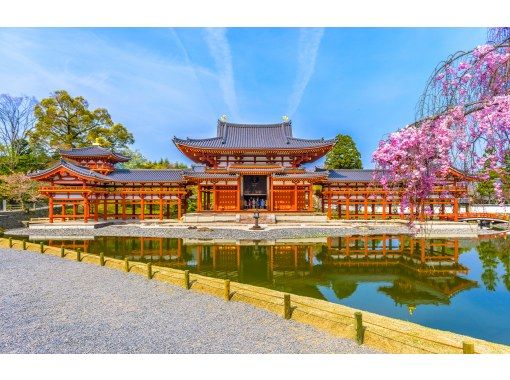
![[Kyoto/Fushimi] Kyoto Round Trail (Higashiyama & Kitayama: 5 divisions) Fushimi Inari starts!の画像](https://img.activityjapan.com/10/53209/10000005320901_GFm6c9nj_3.jpg?version=1734370262)
![[Wakayama, Mount Koya] Experience "Kaji and Prayer" based on the Shingon Esoteric Buddhism ritualの画像](https://img.activityjapan.com/10/50450/10000005045001_QTRiVNk2_3.jpg?version=1733192402)
![[Kyoto/Nagaokakyo] Yanagidani Kannon Yokokuji Temple “Temple Body Care and Rehabilitation Plan” TERAREHAの画像](https://img.activityjapan.com/10/53194/10000005319401_lpXgdgDW_3.jpg?version=1709865064)
![[Wakayama / Koyasan] Making good luck colored paper using red stampsの画像](https://img.activityjapan.com/10/43540/10000004354001_mF6wAgG0_3.jpg?version=1659583864)
![[Hyogo, Sumoto] Experience something out of the ordinary at Senkoji Temple, located on Sakiyama, which is said to be the first mountain to be created in Japan in the "creation mythology" <copying sutras experience>の画像](https://img.activityjapan.com/10/58443/10000005844301_1Gz5AIDf_3.webp?version=1743129423)
![[Hyogo, Minami Awaji] Experience Zen meditation and appreciating the Nanga paintings of Gyokusei Jikihara at a Zen temple associated with the master of Nanga painting who grew up on Awaji Island.の画像](https://img.activityjapan.com/10/58500/10000005850001_1Gz5AIDf_3.webp?version=1743403386)
![[Wakayama, Koyacho/Kudoyamacho/Katsuragicho] Historical road where Kobo Daishi also walked ~ World Heritage Town Stone Path Walkの画像](https://img.activityjapan.com/10/54437/10000005443701_2gFqg5ab_3.jpg?version=1724037379)
![[Hyogo Prefecture Awaji Island] Experience formal worship at Japan's oldest shrine "Izanagi Jingu" Spend a special time sharpening your sensesの画像](https://img.activityjapan.com/10/46911/10000004691101_AHkjA21Z_3.JPG?version=1678360622)
![[Hyogo Prefecture, Awaji Island] Walk the legendary "Eshima" and the Showa retro fishing port town "Iwaya"の画像](https://img.activityjapan.com/10/46866/10000004686601_atFOJjl6_3.jpg?version=1681448582)

